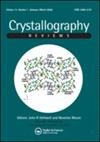Microgravity as an environment for macromolecular crystallization – an outlook in the era of space stations and commercial space flight
IF 2
2区 化学
Q2 CRYSTALLOGRAPHY
引用次数: 4
Abstract
ABSTRACT In 2005 we reviewed microgravity for macromolecular crystallization, four years after the final flight of the Space Shuttle Orbiter, and five years before the first commercial flight to the International Space Station. Since then, there have been developments in access to space and advances in technology. More regular space flight is becoming a reality, new diffraction data detectors have become available that have both a faster readout and lower noise, a new generation of extremely bright X-ray sources and X-ray free-electron lasers (XFELs) have become available with beam collimation properties well suited geometrically to more perfect protein crystals. Neutron sources, instrumentation, and methods have also advanced greatly for yielding complete structures at room temperature and radiation damage-free. The larger volumes of protein crystals from microgravity can synergise well with these recent neutron developments. Unfortunately, progress in harnessing these new technologies to maximize the benefits seen in microgravity-grown crystals has been patchy and even disappointing. Despite detailed theoretical analysis and key empirical studies, crystallization in microgravity has not yet produced the results that demonstrate its potential. In this updated review we present some of the key lessons learned and show how processes could yet be optimized given these new developments.微重力作为大分子结晶的环境——空间站和商业太空飞行时代的展望
摘要2005年,在航天飞机轨道飞行器最后一次飞行四年后,在首次商业飞行至国际空间站五年前,我们回顾了大分子结晶的微重力。自那时以来,在进入空间和技术进步方面取得了进展。更常规的太空飞行正在成为现实,新的衍射数据探测器已经问世,具有更快的读出速度和更低的噪声,新一代极亮的X射线源和X射线自由电子激光器(XFEL)已经问世,其光束准直特性在几何上非常适合更完美的蛋白质晶体。中子源、仪器和方法在室温下产生完整结构和无辐射损伤方面也取得了很大进展。微重力产生的较大体积的蛋白质晶体可以与这些最近的中子发展很好地协同作用。不幸的是,利用这些新技术最大限度地提高微重力生长晶体的效益的进展参差不齐,甚至令人失望。尽管进行了详细的理论分析和关键的实证研究,微重力下的结晶尚未产生证明其潜力的结果。在这篇更新的综述中,我们介绍了一些关键的经验教训,并展示了在这些新的发展情况下如何优化流程。
本文章由计算机程序翻译,如有差异,请以英文原文为准。
求助全文
约1分钟内获得全文
求助全文
来源期刊

Crystallography Reviews
CRYSTALLOGRAPHY-
CiteScore
3.70
自引率
0.00%
发文量
16
审稿时长
>12 weeks
期刊介绍:
Crystallography Reviews publishes English language reviews on topics in crystallography and crystal growth, covering all theoretical and applied aspects of biological, chemical, industrial, mineralogical and physical crystallography. The intended readership is the crystallographic community at large, as well as scientists working in related fields of interest. It is hoped that the articles will be accessible to all these, and not just specialists in each topic. Full reviews are typically 20 to 80 journal pages long with hundreds of references and the journal also welcomes shorter topical, book, historical, evaluation, biographical, data and key issues reviews.
 求助内容:
求助内容: 应助结果提醒方式:
应助结果提醒方式:


